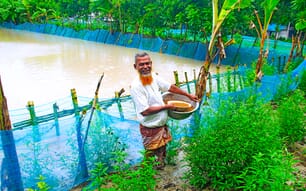How long have you been farming for?
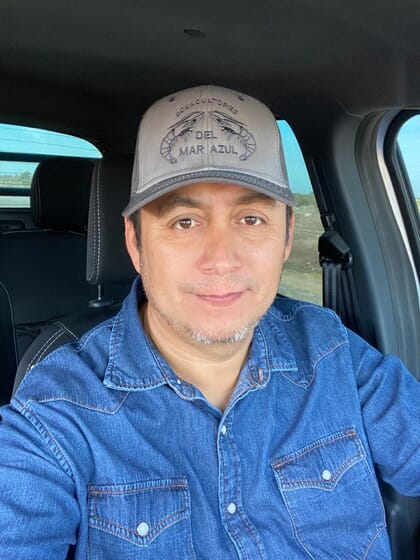
Nieves began his aquaculture career in 2004
I am a graduate of the Autonomous University of Sinaloa - Faculty of Marine Sciences, finishing my degree in 2004. I have 19 years of experience, working in different phases of Pacific white shrimp farming.
I started my professional career as an assistant in a shrimp larvae production laboratory. Later, a great friend of mine, the biologist Thomas James, contacted me to manage a new project of hyper-intensive shrimp farming in raceways called Granjas Ojai.
Afterwards, I had the opportunity to manage different projects that range from recirculating systems in low salinity well water, to management of pre-breeding in earthen ponds and nurseries in plastic geomembrane covered ponds. I currently manage of semi-intensive crops.
I also had the opportunity to work for a shrimp feed company, serving as coordinator of technical services for Mexico, during this period I had the opportunity to learn more about new technologies, new management strategies and the challenges we shrimp farmers face.
What size is your farm and what species do you produce?
Our company has 280 hectares of ponds. There is a section where we have installed automatic feeders and in the rest of the sections we use blowers or mechanical feeding. Our ponds have an average size of 5 hectares. We generally produce two crops of Pacific white leg shrimp per year.
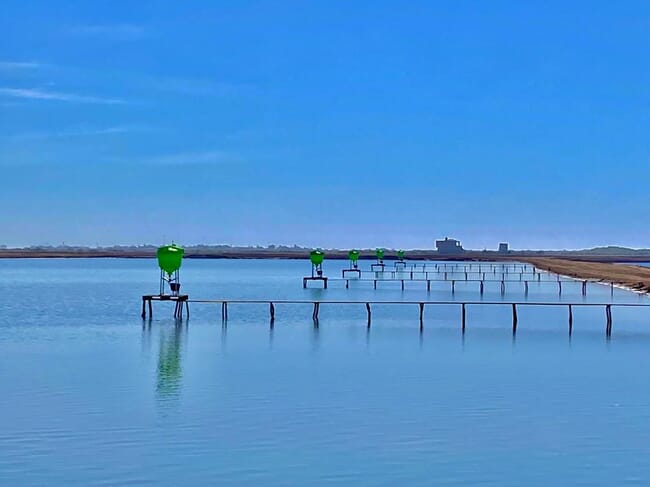
Aquacultores del Mar Azul has 280 hectares of ponds and produces two shrimp crops each year
Our first cycle runs from March to early June. The stocking densities range from 100,000 to 130,000 organisms per hectare. Our objective is to produce 15 g shrimp in 90 days of culture.
Our second cycle runs from mid June to November. For the second cycle we tend to increase the density to a range of 130,000 to 150,000 organisms per hectare, our objective is to harvest 28-30 gram shrimp in 165 days of culture, with two partial harvests during the cycle.
Aquacultores del Mar Azul is a family business that was founded in 2005 by Efren Laija. At the beginning it started with 26 hectares of ponds and over the years the company has been growing in area and technology implementation. Currently our production is 700 tonnes per year and our goal for 2022 is to reach 1,200 tonnes. All our production is sold to the national market.
Why did you decide to embark on a career in aquaculture?
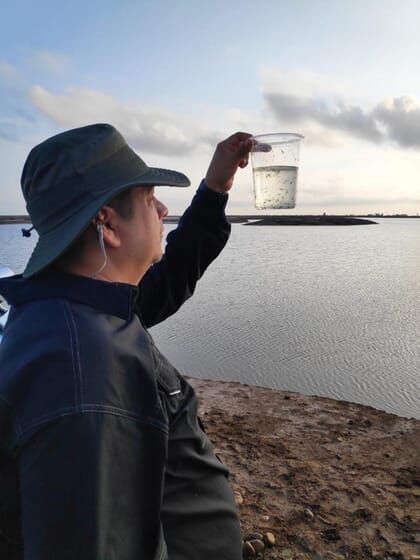
Nieves has been interested in aquaculture since he was young
My interest in aquaculture was sparked at a young age. My father worked capturing wild shrimp larvae that were delivered to collection centres and later sold to shrimp farmers.
I became interested in learning more about farming techniques and I enrolled in technical training on management of aquatic resources in the city of San Blas, state of Nayarit. During this period, I practiced at different local aquaculture farms and once I finished my technical degree, I decided to go study outside my state to continue my specialisation in shrimp farming.
What are your greatest challenges at work?
Disease management is one of the biggest challenges that we currently have as producers. The year 2013 was one of the most difficult years for us, as we had high mortalities caused by Vibrio bacteria. Only 30 percent of the crop reached harvest size.
To overcome the outbreaks and improve production, we tried to understand why this vibriosis caused such strong mortalities, especially in the early stages of cultivation. Over the years we learned to manage our production system and prevent these mortalities, achieving 70 percent survival in 2021.
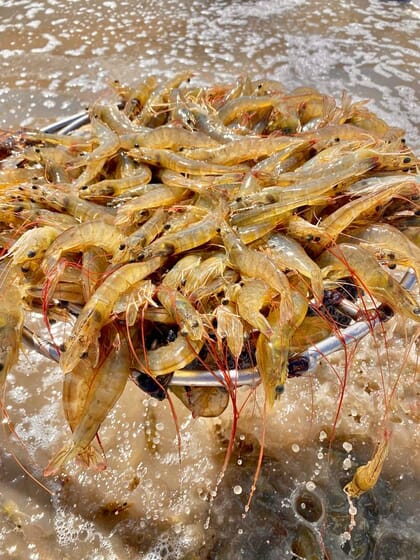
Nieves has worked to keep mortality levels low in the shrimp ponds
Our work is focused on maintaining proper water quality and keeping the physical-chemical parameters at the appropriate levels. One of the parameters that we are constantly managing is alkalinity, which we try to correct every week. We have also implemented the use of organic acids and essential oils in our diets for the early stages of shrimp culture. We have improved our water exchange protocols and our pathology laboratory check-ups are carried out every week, allowing us to make more accurate management decisions.
With all the work that has been done, we have managed to be recognised and certified as a company with good safety practices, by our local agencies. We produce shrimp without the use of antibiotics and our results have encouraged neighbouring farms to follow our practices.
Another of the important challenge that we have is the cost of production. Currently, all the inputs have had price increases. This has made us look for new ways to produce more efficiently. To produce more in the same cultivation area is one of our goals in the short and medium term, for which investments have been made to improve the infrastructure of the farms. Increasing the depth of the ponds, improving pond borders, and having better pond slopes for harvesting are among our improvements.
We have been building nurseries so we can have staggered stocking and we have also invested in better pumping systems, achieving more efficiency in diesel fuel consumption. Our next step is to be able to bring electricity to certain areas of the farm, to avoid the use of diesel fuel.
Highly crucial has been the investment in training and providing better working conditions, which has allowed us to grow year after year.
Overall, by preventing high mortalities and being more efficient with regards to our production costs, we will be more profitable and remain competitive.
What’s aquacultural achievement are you most proud of to date?
In each stage of my career, there have been many achievements and moments of satisfaction, but without a doubt the greatest has been being able to improve the working conditions for our staff: including offering better facilities to work, improving the working culture, providing constant training, better salaries and benefits, and the opportunity to grow within the company.
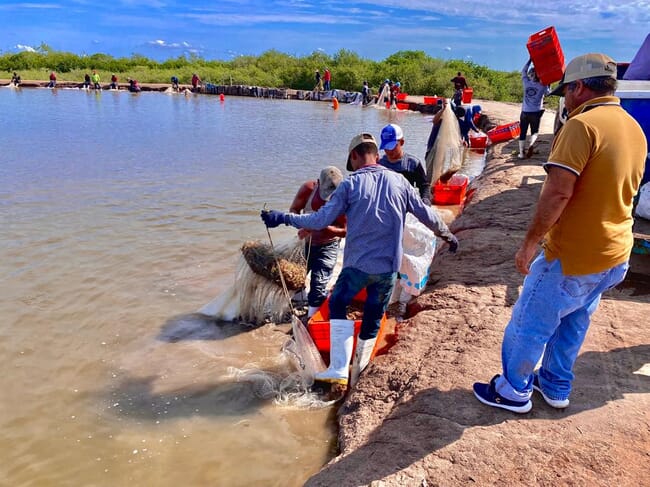
Nieves is proud that he has improved the working conditions for his employees
This has been an important point to be able to grow as a person and to be able to grow the company.
What is your advice to other farmers to achieve good production and profits?
We have understood that the best way to manage our ponds is by measuring parameters and interpreting the information. Each farm is different and even each pond behaves differently, but constant monitoring has allowed us to understand our systems and prevent possible losses.
I would advise other farmers to emulate our efforts of investing in proper infrastructure, acquiring new technologies and investing in personnel. These points have been fundamental for us and we will continue to rely on them to keep moving forward.
What factors affect your decisions on other farm practices?
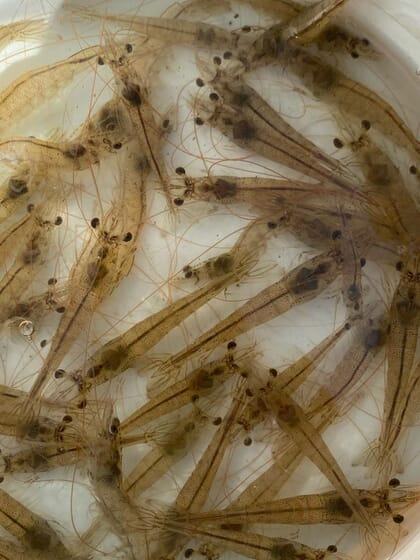
Nieves has noted the recent genetic improvements in shrimp larvae
The genetics traits of growth and disease-resistance from our larvae providers have been improving year after year. We work with different laboratories, depending on our schedule for the year and our market strategy. This is how we make the decision to stock either more or less organisms per hectare, and from which larvae provider.
On the issue of feed, our management is focused on matching the pellet size with the size of the organism. Throughout the culture cycle, there are two overlaps of 8 to 10 days in pellet changes. Adequately managing these changes has allowed us to have a better homogeneity with regards to the weight distribution of the population. To elaborate on this, our feed management for the first stages is with extruded diets at 0.8 mm for 1.0 g shrimp, later we use diets of 1.2 mm for up to 6.0 g shrimp (up to this size, our diets have a mixture of organic acids and essential oils) and we finish until harvest with a pellet size of 1.8 mm.


